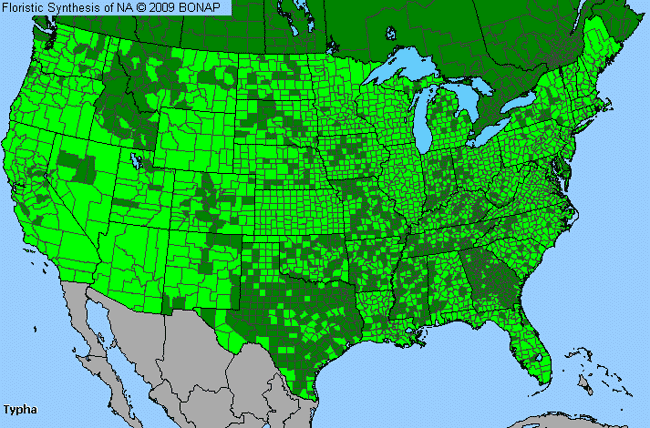Cat-Tail (Typha)

Cat-Tail Genus Details

Cattails are about 6.6 feet high, with a round stem and long flat leaves. They are well known by their unisexual flowers borne above the leaves. The male flowers (sources of pollen) are located above the female flowers in long, dense, brown structures with a "fuzzy" appearance. The family only contains the genus Typha and the plants are commonly found growing in shallow freshwater areas.
Cat-Tail Allergy Info

Cattails shed a great deal of pollen, and may be allergenic to some people. However, exposure is not typically great enough to be a significant source of allergy to the general public.
Cat-Tail Pollen Description

Cattail pollen grains are either single (Typha angustifolia) or united in tetrads (Typha latifolia). The grains are 1-porate and the pores are generally circular. The exine is reticulate.
Single grains are 20-26 micrometers and pollen grains in tetrads are 40-50 micrometers.
Species in This Genus

Allergenicity Legend:
 Mild Allergen |
Mild Allergen |
 Moderate Allergen |
Moderate Allergen |
 Severe Allergen |
Severe Allergen |
 Allergy Test Available
Allergy Test Available
Cat-Tail (Typha) is a genus of the TYPHACEAE family.
This genus includes the following allergenic species:
This genus includes the following allergenic species:















